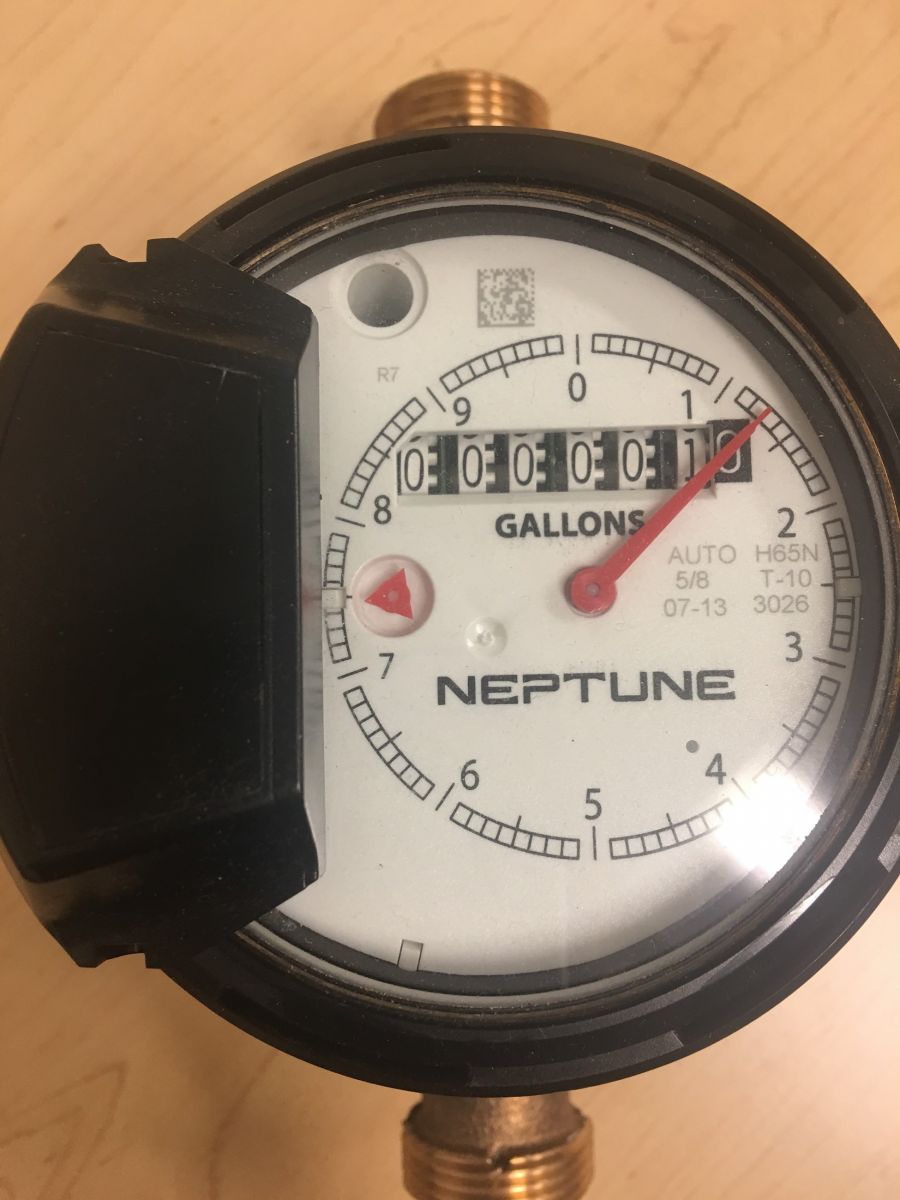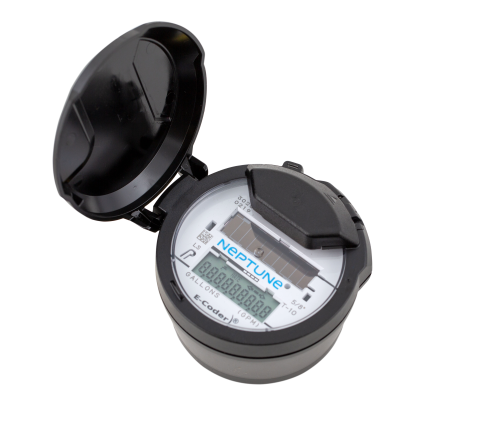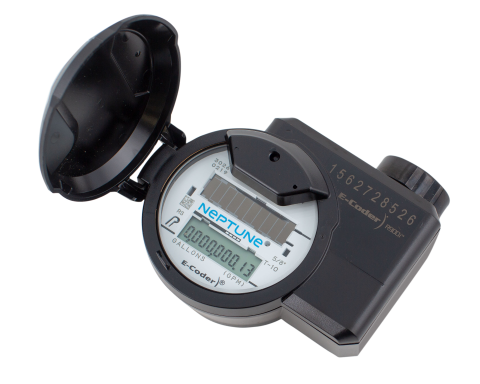STEP 1 Locate your meter pit, generally found towards the front of a property, near the street. It is housed in an underground enclosure usually marked "water" on the lid. Some lids may be lockable and will require pliers or other tool to turn the lock bolt. Remove the lid by using a tool such as a large screwdriver if needed.
STEP 2 Once the lid is opened, lift the protective cap on the meter if present. On the face of the meter, there may be a large dial and a display of numbers, this is an analog meter. For the residential meter, each rotation of the dial measures 10 gallons. Read the number display from left to right. Be sure to include the stationary zero. This is your meter reading. There is a small red triangle next to the reading dials, this is the flow indicator. If the red triangle is spinning at all, there is water flowing through the meter. This can be used to detect a leak.
Newer meters have a digial reading screen. These meters require a flashlight to power on and display the reading. LED flashlights can be used if the light produces over 200 lumens, otherwise an incandescent flash light is preferred. Hold the light on the face of the meter for a few seconds. Within a few seconds the LCD screen should power on and cycle a set of numbers, it will then display the reading. After approximately 10 seconds the screen will switch to the current flow rate. The word "RATE" will be displayed above the numbers. If no water is being used the rate displayed should be 0.00. Any other reading may indicate a leak.
Digital meters are capable of detecting potential leaks. If the meter displays a "dripping faucet" icon above the reading, the meter has detected a potential leak. There are two leak indicators, a FLASHING icon represents an intermediate leak, a SOLID icon represents a continuous leak. Digital meters can also be datalogged and hold water consumption information for the 2 previous months. Unfortunately Analog meters cannot be datalogged.
STEP 3 Keep in mind that you might be checking your meter on a date different from the one used for billing. This could result in a difference in the amount you find, compared with the amount on which your bill is based. However, if your reading is considerably higher than what is on your bill, check for a leak or try to determine the source of large water use. If your reading is significantly lower than the reading on your bill, please contact us and let us assist you in determining the problem.
Pictured below are examples of the types of meters we use in our system.



